Proper nutrition management enhances profitability
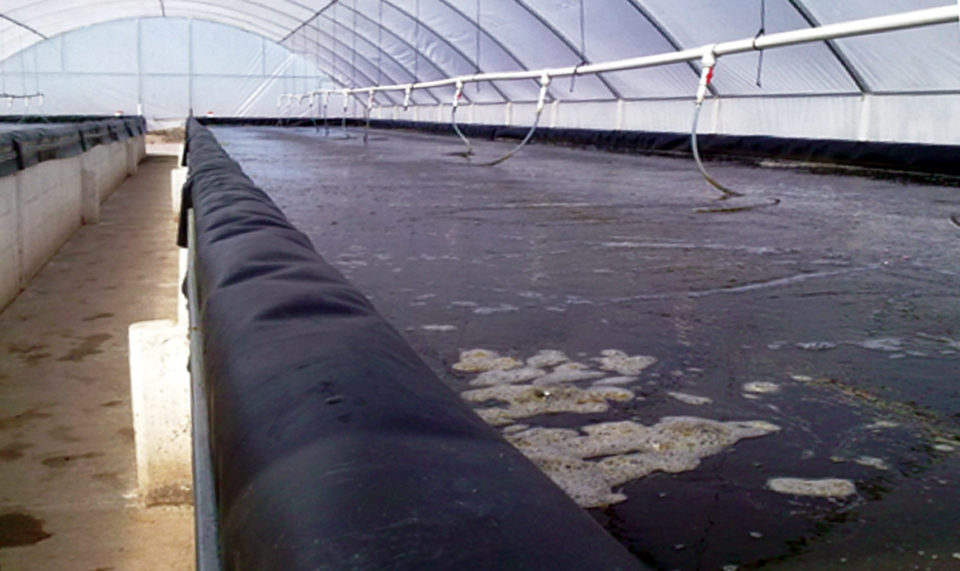
The importance of hyper-intensive nursery systems in shrimp culture has grown dramatically in recent years. Properly designed and managed systems can greatly increase profitability while reducing risk at grow-out farms.
For these systems, the importance of design is often underestimated. Feed management varies greatly from producer to producer, as operators modify traditional procedures through personal experiences and preferences.
Feeding drives culture systems and is fundamental to animal performance. The major considerations in optimizing the performance of a diet are feed type, size and formulation, also taking into account shrimp behavior and physiology. Other important considerations in feeding are water exchange capacity and ammonia management with autotrophic, heterotrophic or mixed systems.
Formulation
Special feed formulas are required for hyper-intensive nursery systems. Regular pond feeds are nutritionally inadequate. Feeds need to supply 100 percent of the nutritional requirements with a concentrated balance of essential nutrients. They have to be highly palatable and very digestible, while avoiding toxins and anti-nutritionals that can build up in the system and increase health and water quality issues.
Feed should be formulated to support shrimp health and immune systems, and stress management to aid the animals’ overall stamina for transfer to growout ponds. Because of the high feeding rates and minimal water exchange typically used in heterotrophic systems, special consideration needs to be given to proper carbon:nitrogen ratios to permit complete assimilation of ammonia into the bacterial floc.
Manufactured feeds
The particle size of the feed used depends on shrimp size and uniformity. Specific sizes and shapes of feed are optimum for any size animal. If culture animals within a tank are of different sizes, feed particles of various sizes need to be used. Optimally, feeding provides a single particle as a meal to each shrimp in the tank at each application.
Check labels for manufacturing dates to insure feed freshness. Good packaging is essential to retain feed quality, and nitrogen should be used in the packaging to extend shelf life and palatability. The feed needs to be manufactured to have good water stability to retain nutrients, but not be so stable that it loses its attractability and is too hard to be eaten. In addition, feeds with different textures are preferred by shrimp.
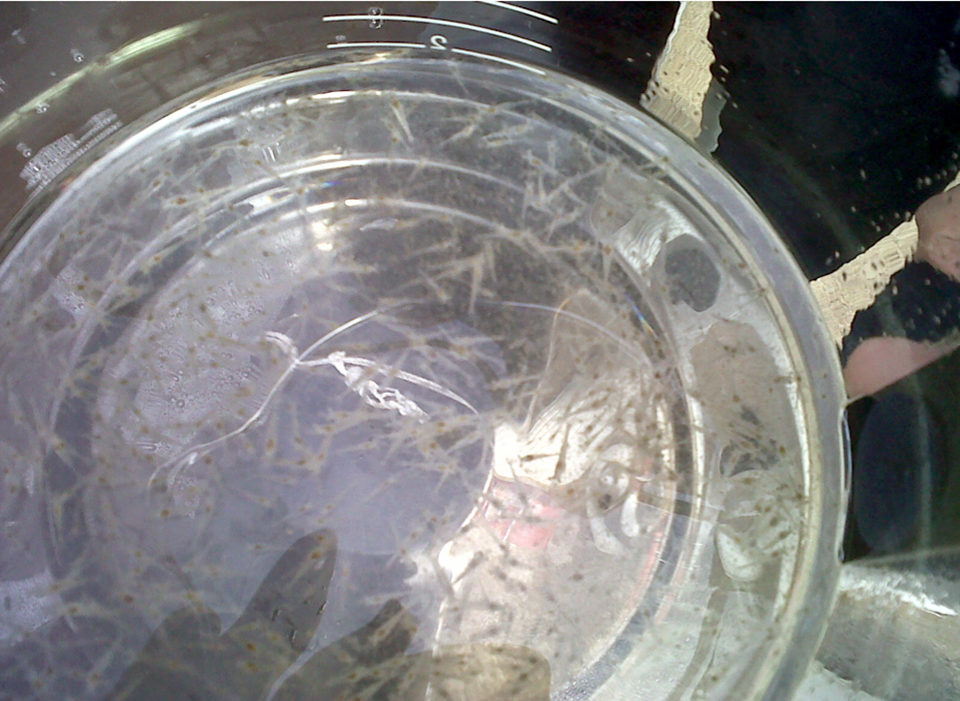
Heterotrophic systems
Heterotrophic production systems usually have water management based on low or zero water exchange, with bacteria dominating the microbial population. They need to have carbon:nitrogen ratios essential for floc formation and ammonia consumption.
For high-protein diets that contribute high levels of nitrogen, heterotrophic systems often need additional carbohydrate sources to be added to maintain the correct ratio. These flocs can contribute some nutrition for the animals, but are not considered a reliable source of food for shrimp.
Autotrophic systems
Autotrophic systems are green- or clearwater systems with phytoplankton, macroalgae and/or nitrifying bacteria that can get their carbon for ammonia conversion from sources other than carbohydrates. These organisms are also considered a highly variable source of food and should not be considered when calculating total feed requirements.
Algae-based systems can have highly variable oxygen, carbon dioxide and pH levels. A high pH over 8.5 can cause ammonia to take a toxic form and should be avoided in low-water-exchange systems.
Feeding
Superior feeds improperly fed produce poor results. The goal is to apply enough feed to achieve the desired growth objective. To achieve the proper feeding rates, daily feed-conversation rates (FCRs) and animal weight gain need to be assessed. Feed tables need to be adjusted relative to water temperature. At lower than 30 degrees C, drop 5 percent each degree, and over 30 degrees, increase 5 percent up to 34 degrees C. Producers need to avoid overfeeding, which reduces water quality.

Continuous feeding via automatic feeders is recommended, because shrimp constantly feed or graze. At a minimum, feed consistent quantities once every two hours, 12 times daily. Aquatic feeds begin to decline in nutritional value promptly after being placed in the water column and can lose much of their value after only one hour in water. Constant daily feeding rates can significantly contribute to a steady-state water environment, but shrimp feeding rates can vary day to day depending on variables such as temperature, oxygen levels and disease.
The feed should reach 70 to 80 percent of the area of the system within several minutes of each feeding. This can be achieved by physically broadcasting the feed across the surface or by allowing the water circulation to distribute it. Producers should avoid excessive build-up of feed in localized areas, where it can become oxygen deficient and produce hydrogen sulfides.
Use proper methods to measure feed efficiency. This is a very important control step. To avoid overfeeding, it is common to use feeding trays. If excess feed is found on the trays between feedings, the feed quantity should be proportionally reduced. The opposite is done if no feed is found when trays are checked. It is also important to observe intestinal coloration in shrimp, which can vary depending on whether animals are consuming feed or other material in tanks.
Producers should always monitor growth rates and performance to determine if feeding rates are achieving the production goals. Observing animal-feeding behavior is also important to understand if feed is being used correctly.
Overfeeding can increase floc and bacteria populations to undesirable levels. It can also increase requirements for probio-tics, ammonia and nitrite production, oxygen demand and carbon dioxide production.
Compensatory gain
If intensive nursery systems are properly run, shrimp typically exhibit slower than optimum growth and do not achieve the same size as animals stocked directly into a pond at the same temperatures. However, shrimp can recoup this difference in a very short time if producers adjust feeding rates to consider potential compensatory gain after the transfer of juveniles to growout ponds. This is one of the most important tools in pond management to shorten the pond cycle to market size, reduce disease risk and increase profitability.
Bottom Line: Proper management of nutrition in shrimp nursery systems enhances overall profitability.
(Editor’s Note: This article was originally published in the September/October 2013 print edition of the Global Aquaculture Advocate.)
Authors
-
Neil Gervais
Technical Sales Manager – Shrimp Feeds
Zeigler Bros., Inc.
P. O. Box 95
Gardners, Pennsylvania 17324 USA[109,111,99,46,100,101,101,102,114,101,108,103,105,101,122,64,115,105,97,118,114,101,103,46,108,105,101,110]
-

Thomas R. Zeigler, Ph.D.
Senior Technical Advisor
Past President and Chairman
Zeigler Bros., Inc.
P. O. Box 95
Gardners, Pennsylvania 17324 USA
Related Posts

Aquafeeds
A look at protease enzymes in crustacean nutrition
Food digestion involves digestive enzymes to break down polymeric macromolecules and facilitate nutrient absorption. Enzyme supplementation in aquafeeds is a major alternative to improve feed quality and nutrient digestibility, gut health, compensate digestive enzymes when needed, and may also improve immune responses.
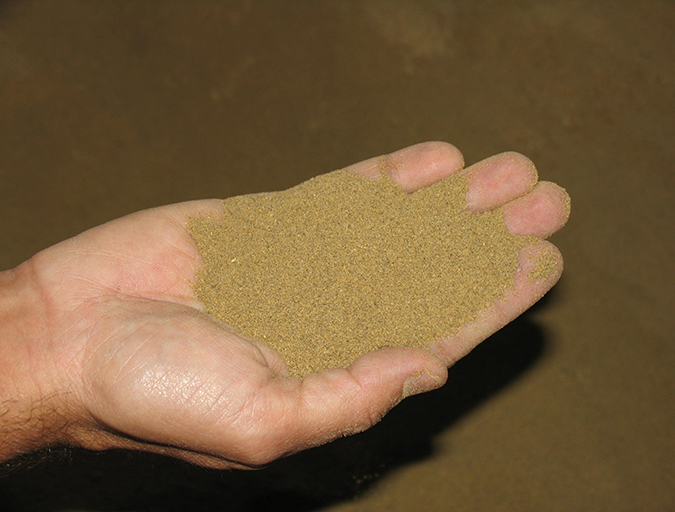
Aquafeeds
A look at the SME controlled extrusion process
A study was conducted using a Twin-Screw Extruder equipped with Specific Mechanical Energy (SME) and Density Control valves, to determine the effect of SME on the water stability of shrimp feeds. Further research is needed to evaluate the performance.
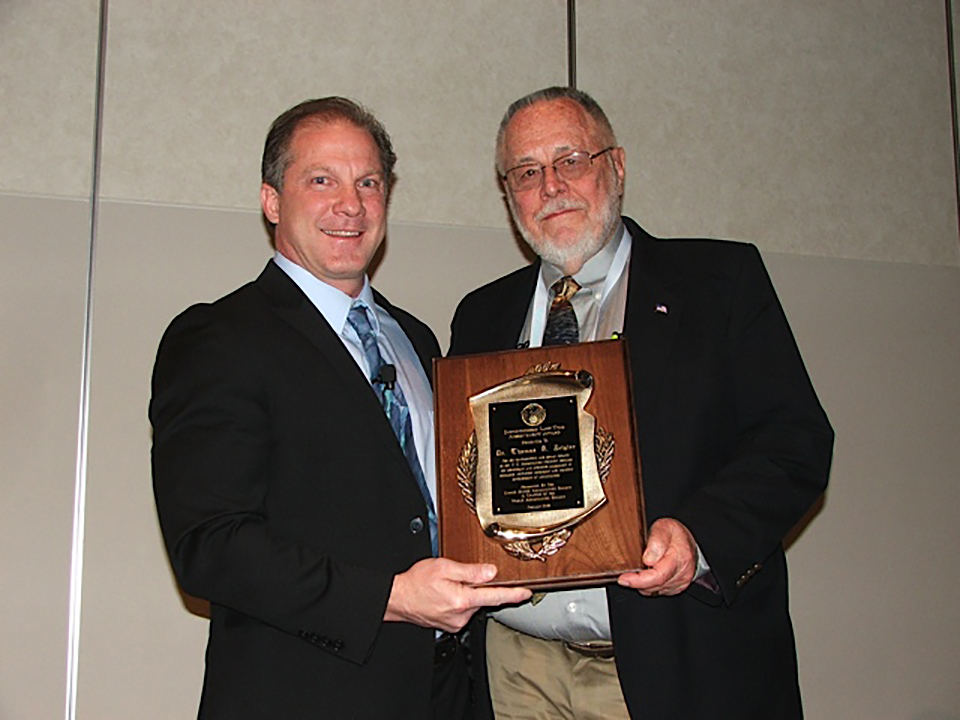
Aquafeeds
Aquaculture Exchange: Dr. Tom Zeigler
The World Aquaculture Society’s latest Lifetime Achievement Award recipient reflects on 50 years in the business of producing high-quality, nutritious feeds for the poultry, livestock and aquaculture industries.
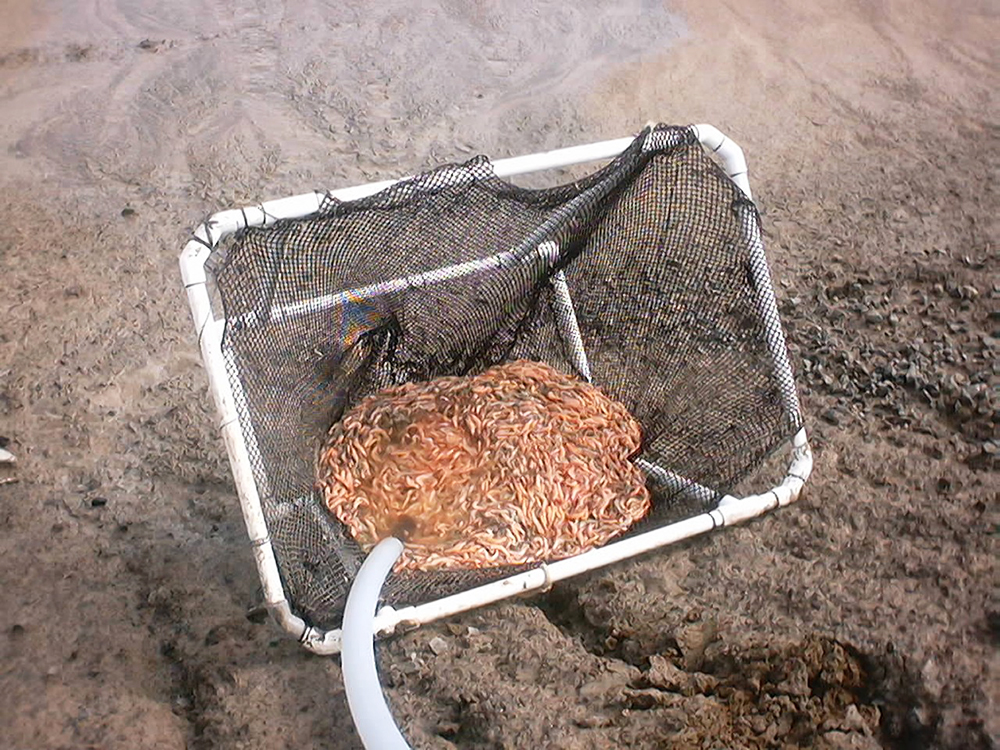
Aquafeeds
Biosecurity protocols needed for shrimp feeds, feeding practices
Shrimp aquafeeds – live, fresh or formulated – should not be an entry point of potential pathogens to the shrimp and/or to their culture systems.


